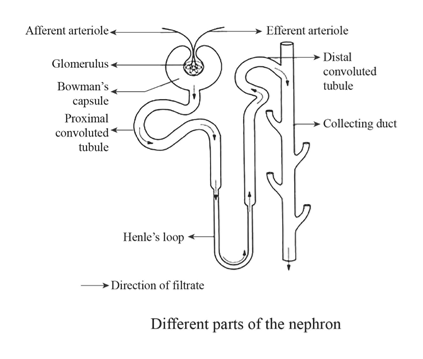Text notarized on EthereumF and EthereumC, indexed to private key "kidney", and also notarized here with Steemit. https://etherscan.io/tx/0xb292cad0265f749beb6a9551ff3634b4053f4047b86563e9107869d85b9049a1, https://blockscout.com/etc/mainnet/tx/0xc52aed22b475f83c245669eeec1bfb7211fd5befbbc509dd17fa5dfe17875101
The idea is simple. The “thin segment” in the metanephros (the one terrestrial animals have) is homologous to “thin segment” in mesonephros (that aquatic animals have) and archinephros (that is a bit evolutionarily older than mesonephros). Homer Smith, the world leading authority on kidney in early 1900s, detailed this in his original work from 1953.
In mesonephros it has formed a loop that dives deep into kidney towards the “papilla” where urine eventually drains. This “loop” was discovered in 1800s by a Jacob Henle and is named after him, “Henle’s loop”.

Since it is “thin”, resistance to fluid flowing into it is high. This forces the fluid to concentrate itself. That is self-evident based on standard fluid dynamics. This is what people have missed. It is a “passive” effect for the countercurrent multiplication. Such a mechanism has been theorized for 50 years, but, so, it is self-evident that this is what causes it. It is powered by pressure from the heart, the kidney in mammals receives 1/5th of cardiac pressure (arms, head, legs, and stomach organs get the other 4/5ths. )
This “passive” mechanism is then monitored by the main function-monitoring-system of the kidney, the “juxtaglomerular apparatus”. People think it is monitoring “blood pressure” basically. Like, as if animals have trouble with that. Physiology includes the root logos for a reason, things should add up.
Synapses
Smith, H. W., Thomson, K. S., Little, Brown and Company,, & McClelland and Stewart Limited,. (1953). From fish to philosopher. Boston: Little, Brown and Company.
Kokko, J. P., & Rector, F. C., Jr. (1972). Countercurrent multiplication system without active transport in inner medulla. Kidney International, 2(4), 214–223. https://doi.org/10.1038/ki.1972.97
Sands, J. M., & Layton, H. E. (2009). The Physiology of Urinary Concentration: An Update. Seminars in Nephrology, 29(3), 178–195. https://doi.org/10.1016/j.semnephrol.2009.03.008
Gilmer, G. G., Deshpande, V. G., Chou, C.-L., & Knepper, M. (2018). Flow resistance along the rat renal tubule. American Journal of Physiology-Renal Physiology, 315(5), F1398–F1405. https://doi.org/10.1152/ajprenal.00219.2018
Layton, A. T., & Layton, H. E. (2011). Countercurrent multiplication may not explain the axial osmolality gradient in the outer medulla of the rat kidney. American Journal of Physiology-Renal Physiology, 301(5), F1047–F1056. https://doi.org/10.1152/ajprenal.00620.2010
Berliner, R. W., Levinsky, N. G., Davidson, D. G., & Eden, M. (1958). Dilution and concentration of the urine and the action of antidiuretic hormone. The American Journal of Medicine, 24(5), 730–744. https://doi.org/10.1016/0002-9343(58)90377-2